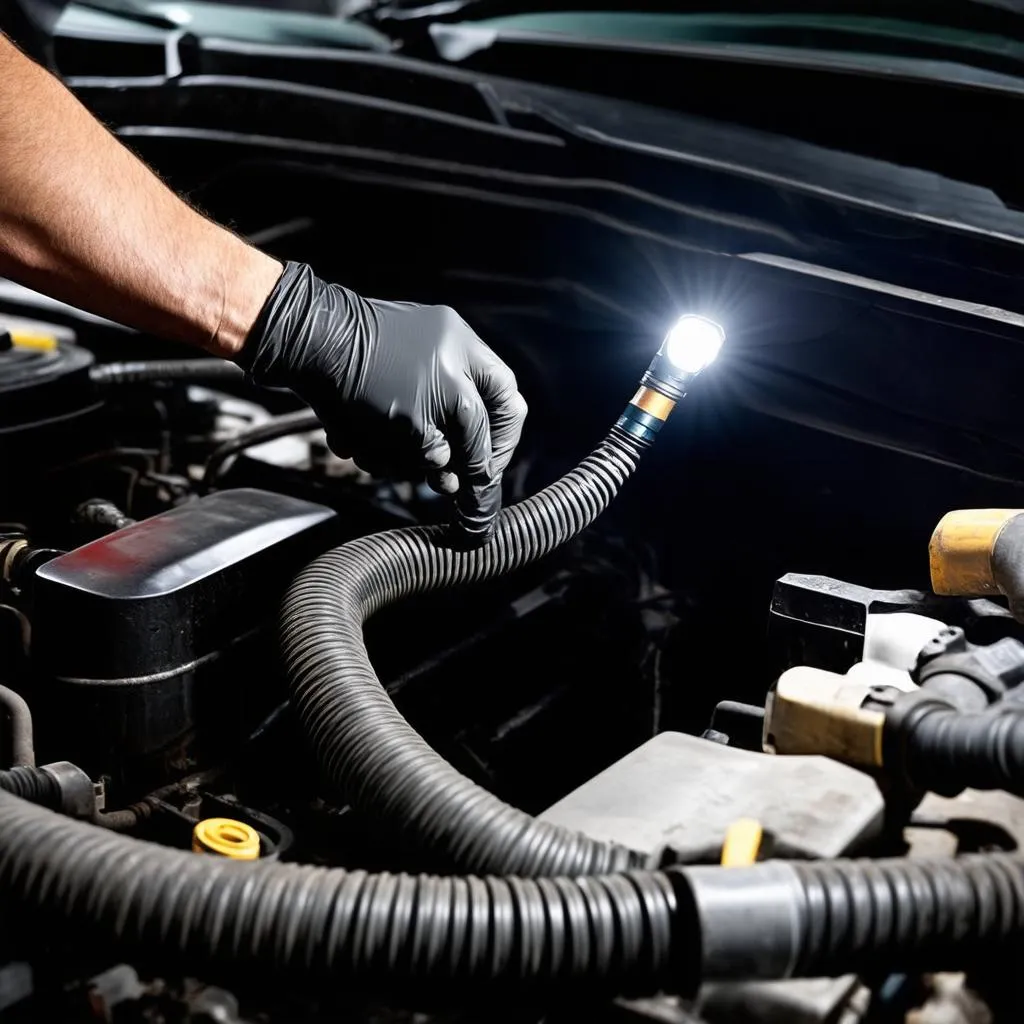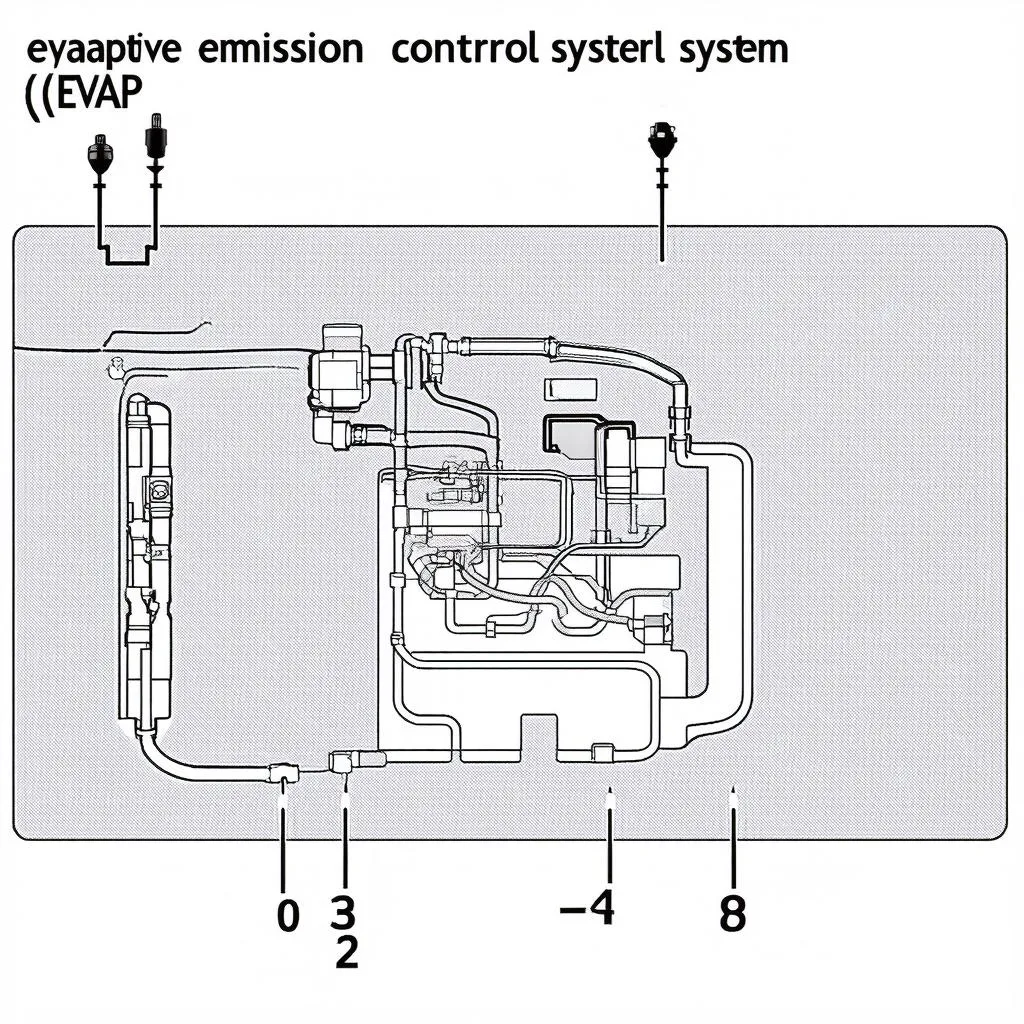Imagine this: you’re driving down the road, enjoying the summer breeze through your open windows, when suddenly your car’s engine light starts flashing. You pull over, check the engine, and there’s nothing obvious wrong. Then you notice the “Check Engine” light is accompanied by an error code: “EVAP.” You’re probably thinking, “What is an EVAP code, and how do I fix it?”
Don’t worry, you’re not alone. Many car owners encounter EVAP codes at some point, and it can be a bit confusing to figure out what’s happening. In this article, we’ll break down the meaning of Evap Obd Codes, the common causes, and how you can troubleshoot and potentially fix the issue yourself.
Understanding EVAP Codes
What is an EVAP System?
The EVAP system (Evaporative Emission Control System) is a crucial part of your car’s emissions control system. It’s designed to prevent harmful fuel vapors from escaping into the atmosphere. Essentially, the EVAP system captures fuel vapors that evaporate from your gas tank and routes them back into the engine to be burned.
What Do Evap Obd Codes Mean?
When you see an EVAP code on your OBD2 scanner, it means that there’s a problem with the EVAP system. The code itself usually doesn’t tell you the exact issue, but it signals that something is wrong. To understand the problem, you’ll need to investigate further.
Common Evap Obd Codes:
Here are some of the most common EVAP OBD codes you might encounter:
- P0440: EVAP System Malfunction
- P0441: EVAP System Incorrect Purge Flow
- P0442: EVAP System Leak Detected
- P0443: EVAP System Pressure Sensor A Circuit Malfunction
- P0446: EVAP System Vent Control Valve Stuck Open
- P0455: EVAP System Leak Detected (Gross Leak)
Diagnosing and Troubleshooting EVAP Codes
Now that you understand what EVAP codes mean, let’s delve into how to diagnose and troubleshoot them.
Step 1: Inspect for Visual Clues
- Check for Damaged Hoses and Components: Look for any cracks, splits, or loose connections in the EVAP hoses, especially near the gas tank, purge valve, and vent valve.
- Inspect the Gas Cap: Ensure the gas cap is securely tightened. A loose or damaged gas cap is a common culprit for EVAP leaks.
Step 2: Utilize a Smoke Machine
- Smoke Test: A smoke test is a reliable method for pinpointing leaks in the EVAP system. The smoke machine pressurizes the system with smoke, allowing technicians to visualize leaks as smoke escapes.
Step 3: Use an OBD2 Scanner
- Obtaining More Information: While a basic OBD2 scanner will display the EVAP code, a more advanced scanner can provide additional information about the specific problem. This can help you narrow down the potential causes.
Step 4: Examine and Test Components
- Evaporative Canister: Inspect the evaporative canister for damage, blockage, or cracks.
- Purge Valve: Test the purge valve to ensure it opens and closes correctly.
- Vent Valve: Similarly, check the vent valve’s functionality.
- EVAP Pressure Sensor: Inspect the pressure sensor for damage, debris, or electrical issues.
Common Causes of EVAP Codes
Here are some of the most frequent reasons for EVAP codes:
- Loose or Damaged Gas Cap: As mentioned earlier, this is a common cause of EVAP leaks.
- Cracked or Leaky Hoses: EVAP hoses can deteriorate over time, leading to leaks.
- Faulty EVAP Canister: The canister can become clogged or damaged, preventing proper vapor capture.
- Malfunctioning Purge Valve or Vent Valve: These valves play crucial roles in the EVAP system, and their failure can disrupt its function.
- Defective EVAP Pressure Sensor: A malfunctioning sensor can provide inaccurate readings, triggering EVAP codes.
Seeking Professional Assistance
While some EVAP issues can be resolved with DIY troubleshooting, others may require the expertise of a qualified mechanic. For more complex EVAP problems, it’s advisable to seek assistance from a professional auto repair shop or a qualified technician specializing in automotive electrical systems.
 EVAP hose inspection
EVAP hose inspection
What are some other common questions about EVAP codes?
- Is a “Check Engine” light with an EVAP code always a serious problem? While an EVAP code usually indicates a leak in the system, it’s not necessarily an emergency situation. However, it’s important to address the issue promptly to prevent further damage and ensure optimal vehicle performance.
- Can I drive my car with an EVAP code? It’s generally safe to drive with an EVAP code for a short period, but don’t ignore it. It’s best to address the problem as soon as possible to avoid potential issues and maintain the health of your car’s emission system.
- Can I fix EVAP problems myself? Some EVAP issues, like a loose gas cap, are simple fixes. However, more complex problems may require the expertise of a mechanic.
- How much does it cost to fix an EVAP code? The cost to repair an EVAP code can vary depending on the specific issue and the repair facility.
- How can I prevent EVAP problems? Regular maintenance and visual inspections of the EVAP system can help prevent future problems. Replacing hoses when they show signs of wear and tear is crucial.
 EVAP System Diagram
EVAP System Diagram
Conclusion
Dealing with an EVAP OBD code can be frustrating, but understanding the system’s function and common causes can help you troubleshoot and resolve the problem. Whether you choose to tackle it yourself or seek professional assistance, addressing the EVAP code promptly ensures proper vehicle operation and protects the environment.
Need help diagnosing or repairing an EVAP code? Our team of automotive specialists is here to assist you. Contact us via WhatsApp at +84767531508 for expert advice and support 24/7.
Remember to always consult your vehicle’s owner’s manual for specific recommendations and guidelines related to EVAP system maintenance.